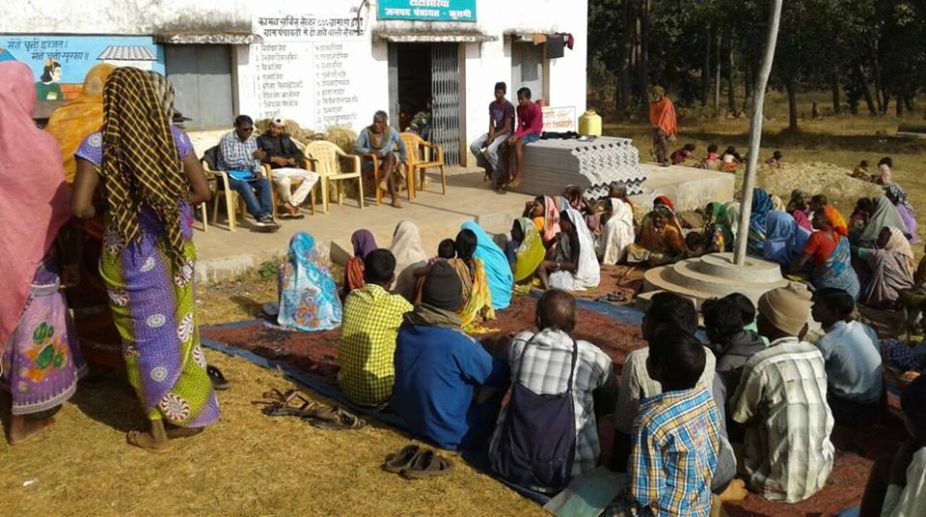Person days in MGNREGS increase 76 pc in last 10 years
As per government data, this is a 76 per cent increase in the last decade, from 1,660 crore generated between FY 2006-07 to FY 2013-14.

(Photo: Facebook)
For several years now community participation has been the buzzword in the development sector. The community was always supposed to be at the centre of all poverty-reduction activities but how many thought of including it as a genuine partner in these activities. However, very soon everybody was reminded of the community.
It started with the dictum of Professor Robert Chambers, ‘Ask them’. During the 1980s and 90s, community participation became popular in all poverty alleviation programmes. The whole approach was based on the assumption that communities themselves know better what their needs are, so ‘ask them’ and as given proper resources they are in a better position to implement programmes and projects concerning them, so ‘involve them’.
Thus participation would lead to empowerment, which in turn would lead to poverty reduction. Direct involvement of the community was assumed to lead to efficiency and effectiveness of the projects and make them much more sustainable. There are genuine examples where participation has led to both empowerment and efficiency.
Advertisement
For example, the inclusion of women in management roles in village water committees and associations is seen to represent a form of female emancipation and also ensuring the sustainability of facilities.
Another assumption is that people know better than experts what their needs are and who among them are not able to fulfill them.
One more argument which is given in favour of community participation is that it can be an effective way of reducing the cost of several anti-poverty interventions.
Local community may know better ways to lower costs than the oursider. Also, communities may be in a better position to verify that activities related to interventions take place.
However, if strong community participation was seen as a way to alleviate poverty, it came with a sobering acknowledgement that there is much to learn about the ways a community is engaged. Community participation is based on the assumption that communities are homogeneous and are well-informed, competent and capable.
However, in reality communities are not homogeneous or have common interests; instead they compete for the benefits.
When NGO activists and social scientists talk of how ‘a community’ lobbied local government, built a well or decided on a development strategy, who are they talking about? Do they mean everyone in the community, or just the majority, or just the richer ones, or just the men? Is the will of ‘the community’ the same as the will of the community leadership?
In reality, participation is selective and tends to concentrate on people who are not very poor because to the poor, participation is a costly and time-consuming affair.
Therefore those who actually require interventions have little or no time to participate (unless special efforts are made to make it viable for them), as participation comes at the cost of their day’s labour which they can hardly afford.
More so, there is always a danger of elite capture of any community activity.
Since many community organisations are not democratically elected, the involvement of local leaders often represents the voice of a group of self-appointed people. In the process the poor become even more marginalised.
Also, most of the time, the resources distributed are scarce. Under such circumstances, the expectation that poor people should cooperate in the distribution of these scarce resources is too much to ask for.
Such situations mostly promote competition rather than cooperation among community members. Initially community participation created very high expectations.
However, with time their experience with these expectations and low outcomes has discouraged many members from participating further. In reality there are many assumptions related to community which can either promote or hinder participation.
There is need to recognise the fact that there is no ‘one size fits all’ solution to community participation. Its outcomes always grow out of specific situations and it cannot be replicated in another community.
For poverty alleviation, first we need to acknowledge that there exist no ‘poor communities’ but communities where a majority but not all of the people are poor. Poor are usually marginalised by their fellow community members and their voices are ignored. Poverty reduction is more of a political issue than a technical one.
It is very difficult to consider community as a homogeneous entity. Collective action of the people is an exception, not rule. Participation is not possible in an environment where resources are scarce and benefits limited. Under such circumstances the poor see themselves as competitors and instead of cooperation seek patronage.
Here comes the role of politicians who work as patrons. Politicians seek clients among the poor to remain in power and instead of taking up the cause of the poor they only do some symbolic service. Thus despite all efforts of the last so many decades, the problem of poverty remains very serious. What is required to be done to tackle poverty is to bring structural change rather than symbolic services.
There is a need for redistribution of resources and this distribution is always demand-driven rather than supply-driven. Thus the effort should be to increase the assertive and empowered role of the poor. Those who remain silent are always ignored. Thus real empowerment for poor is to increase their bargaining power.
(The writer is a freelance contributor and researcher)
Advertisement